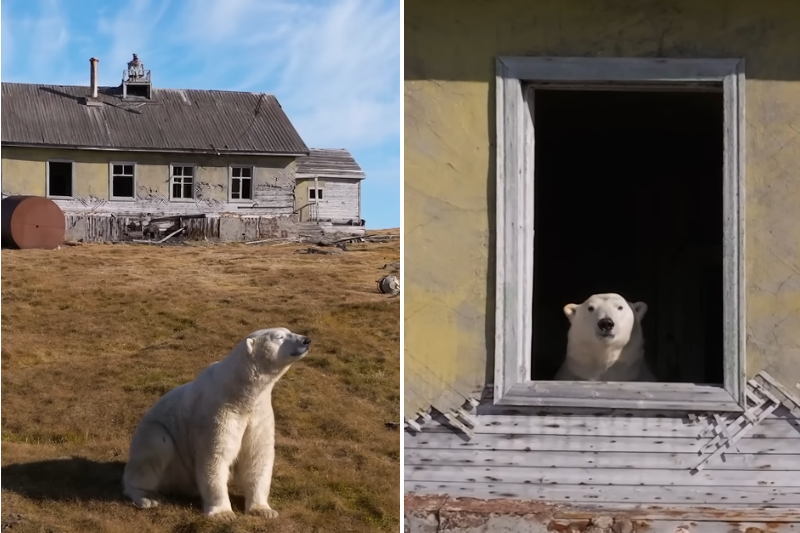New drone footage of more than a dozen polar bears that have moved into an abandoned Russian weather station are again melting hearts online and casting a spotlight on wider changes in the animals’ behaviour as the world continues to heat up.
The video was posted on YouTube this week by Russian traveller and photographer Vadim Makhorov.
It was picked up and reposted by the Associated Press on its X account, where it has so far been viewed more than 350,000 times.
The 30-second video shows about 20 polar bears mostly sprawled inside the ruins of a Soviet-era weather station on the uninhabited island of Kolyuchin in the Chukchi Sea, just off the northern coast of the Chukotka Peninsula in Russia’s far north-east.
One bear tries to snatch the drone with its mouth. Another tries grabbing it with its paw.
The other polar bears are seen peeking out of the windows, staring curiously at the drone, or just lying lazily by doorways.
It is not the first time these polar bears were seen there.
In September 2021, Russian wildlife photographer Dmitry Kokh and his team came upon the band of bears by chance as they were making their way towards Wrangel Island, but were waylaid by a storm.
“We saw some movement on the island, took out our binoculars, and saw polar bears roaming around there, many of them, maybe 15 or 20,” Mr Kokh recalled on his website.
The weather station on Kolyuchin was abandoned in the early 1990s, after the collapse of the Soviet Union.
Mr Kokh used a drone to get a closer look at the bears and to take photos of them.
One of the photos captures a bear gazing through the window of one of the buildings. Titled House Of Bears, it won Mr Kokh the prestigious Wildlife Photographer of the Year award.
Professor Tom Smith, who teaches wildlife sciences at Brigham Young University in Utah, told the BBC it is not unusual to see polar bears in abandoned buildings.
“They’re curious animals, so we see them in structures often, or they will be climbing on top of cars or pipelines,” he said.
But with sea ice melting as the planet warms, polar bears have been making more forays into inhabited towns or villages to feed on open rubbish dumps. That has led to more contact – and conflict – with humans.
Polar bears are also moving their dens from the ice onto the land, to avoid the risk of denning on the increasingly unstable sea ice.
Prof Smith stressed, though, that polar bear attacks on humans are very rare.
According to one study, across more than a century, from 1870 to 2014, there were only 73 attacks by wild polar bears on humans, distributed among the five countries with polar bears: Canada, Greenland, Norway, Russia and the United States.
Climate changeWildlife conservationWildlifeAnimal welfareAnimals

